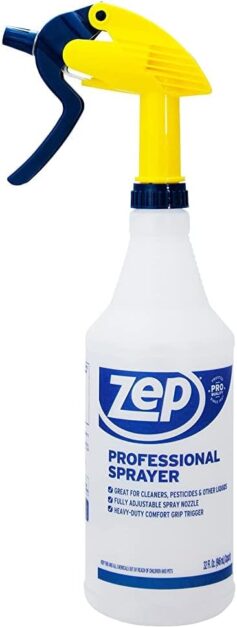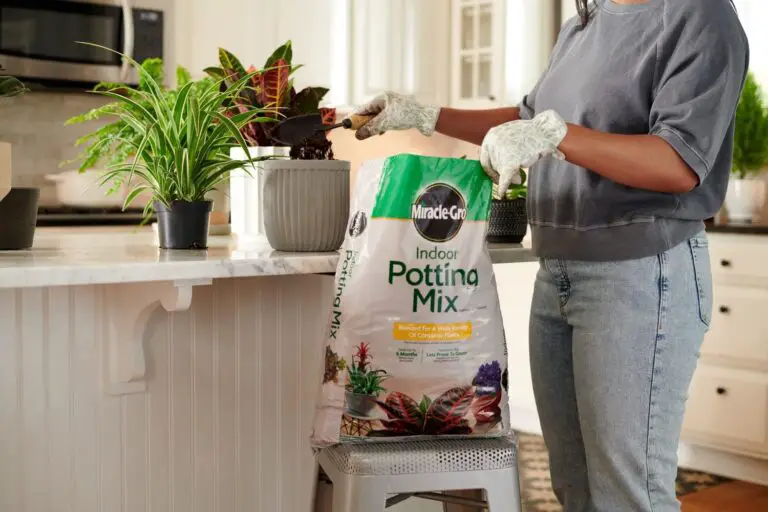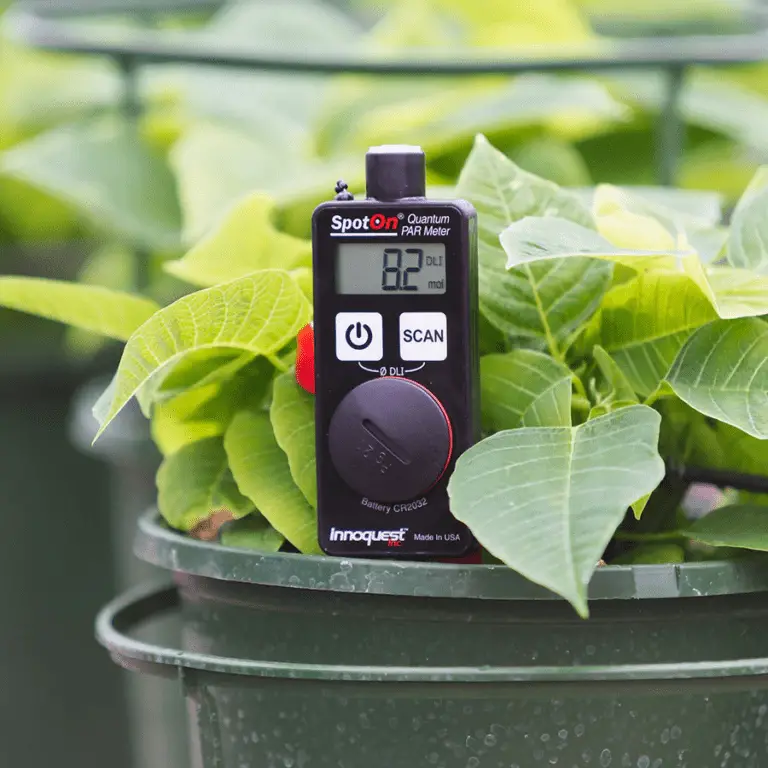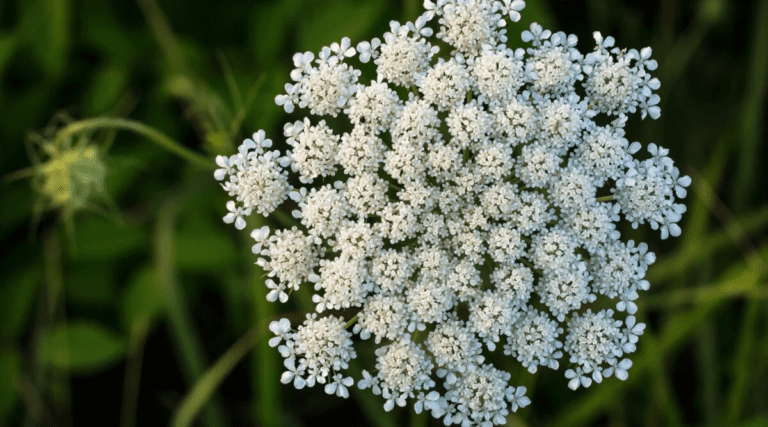Make Garlic Spray for Pests and Plant Diseases
Did you know that garlic can be a powerful tool in your garden to combat pests and plant diseases? That’s right, garlic spray is a natural and effective solution to protect your plants without using harmful chemicals.
As a gardening enthusiast, you want to ensure your plants thrive and stay healthy. But sometimes, pesky bugs and diseases can damage your garden, leaving you frustrated and worried. That’s where garlic spray comes in.
Garlic has natural antibacterial and antifungal properties that can help prevent and treat plant diseases. It also repels pests like aphids, spider mites, and whiteflies, keeping your garden looking lush and beautiful.
In this blog, we’ll show you how to make garlic spray for pests and plant diseases using simple ingredients you probably already have at home. You’ll learn the right proportions, how to apply it, and when to use it for maximum effectiveness.
By the end of this blog, you’ll have a new weapon in your gardening arsenal that’s easy, affordable, and eco-friendly. So, let’s get started and make your garden thrive with garlic spray!
Table of Contents
Identifying Common Pests and Plant Diseases in Your Garden
One of the challenges that gardeners often face is identifying common pests and plant diseases that can wreak havoc on their plants. It is important to be able to recognize these issues early on in order to take the necessary steps to control and prevent further damage.
- Common Garden Pests:
- Aphids
- Caterpillars
- Beetles
- Mites
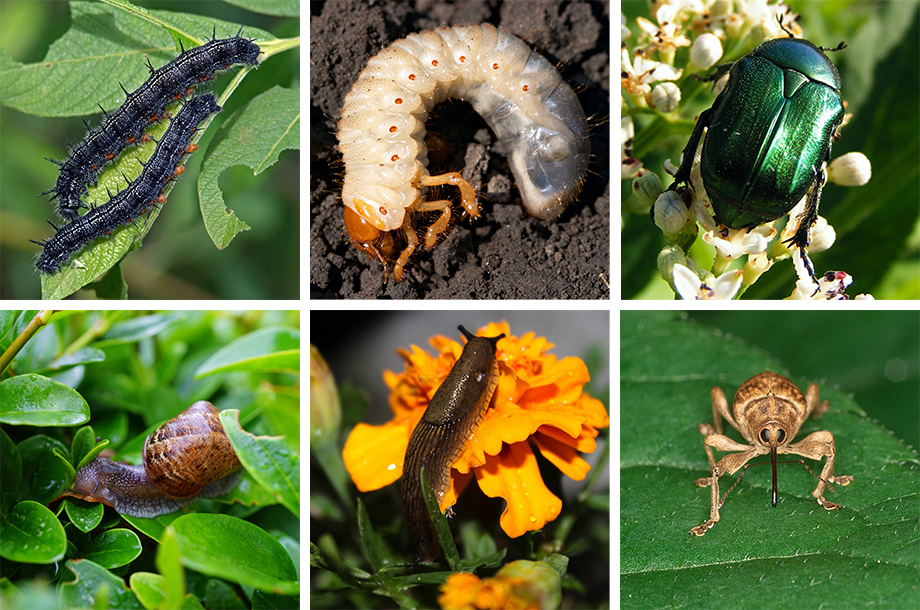
Damage Caused by Pests:
- Feeding on leaves, stems, and fruits
- Stunted growth
- Reduced yields
- Transmission of diseases between plants
Identification of Pest Infestations:
- Wilting, yellowing, or distorted leaves
- Chewed or damaged foliage
- Unusual growth patterns
- Discolored spots
- Presence of webs or eggs
Common Plant Diseases:
- Powdery mildew
- Blight
- Rust
- Bacterial infections
- Viral diseases
- Nematode infestations
Symptoms of Plant Diseases:
- Powdery or fuzzy growth
- Black or brown spots
- Unusual cankers or lesions
- Rotting fruits
Identification of Plant Diseases:
- Observing symptoms mentioned above
- Researching specific symptoms online or in gardening books
Treatment and Prevention:
- Implementing appropriate treatments based on the identified pest or disease
- Applying preventive measures such as using insecticidal soaps, fungicides, or beneficial insects
- Maintaining good garden hygiene by removing diseased plants or plant parts
- Rotating crops to reduce pest and disease buildup
Stay tuned for the next article in this series, where we will delve into the science behind garlic’s effectiveness as a natural pesticide and explore different methods of extracting garlic for spray preparation. With this knowledge, gardeners can take a proactive approach to protect their plants from harmful pests and diseases.
The Science Behind Garlic’s Effectiveness as a Natural Pesticide
Garlic has long been celebrated for its culinary uses and health benefits, but its potential as a natural pesticide has recently gained attention in the gardening community. The science behind garlic’s effectiveness lies in its chemical properties and compounds that have been found to repel or deter pests and inhibit the growth of plant diseases.
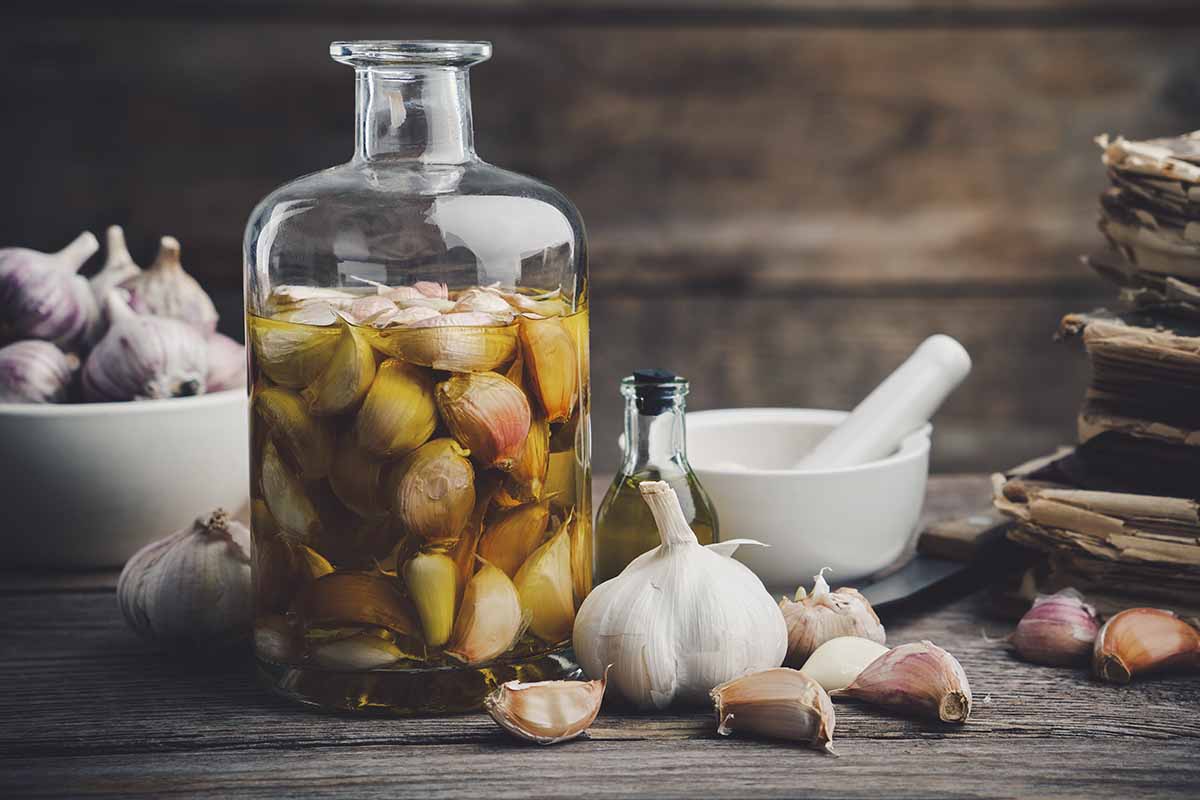
- Allicin: When garlic is damaged (crushed, chopped, etc.), an enzyme converts the precursor compound alliin into allicin. Allicin is a volatile and pungent compound responsible for garlic’s characteristic odor. It acts as a natural defense mechanism against pests and diseases.
- Repellent Properties: The strong smell of allicin repels various insects, including aphids, mealybugs, and spider mites—common garden pests.
- Antifungal Activity: Allicin inhibits the growth and development of fungal pathogens like powdery mildew and Botrytis blight, making it effective in plant disease management.
- Sulfur Compounds: Garlic contains other sulfur compounds, such as diallyl sulfide and diallyl disulfide, which also exhibit pesticidal properties.
- Deterrent for Herbivorous Insects: These sulfur compounds deter herbivorous insects, interfering with their feeding and reproductive processes.
- Suppression of Plant Pathogens: Garlic’s sulfur compounds suppress the activity of certain plant pathogens.
- Antifungal, Antibacterial, and Antiviral Properties: Beyond pest control, garlic’s sulfur compounds have broader benefits, including antifungal, antibacterial, and antiviral effects.
Remember that when using garlic as a botanical pesticide, caution is necessary. It can affect both beneficial and harmful bugs, so test it on a small part of the plant first. Homemade garlic spray, made from garlic, onion, cayenne pepper, and liquid Castile soap, can be an effective natural deterrent against pests. Happy gardening! 🌱🌼
Exploring Different Methods of Extracting Garlic for Spray Preparation

Garlic is renowned for its powerful effects as a natural pesticide, making it a popular choice for gardeners looking for organic alternatives. When it comes to extracting garlic for spray preparation, there are several methods available, each with its own advantages and considerations.
Crush garlic cloves and soak them in water.
Allow the active compounds to be released over time.
Can use a mason jar or dedicated infusion container.
Strain infused water and dilute before applying as a spray.
Use a device designed to extract juice from garlic cloves.
Provides concentrated liquid for easy dilution.
Extractor presses can be manual or electric.
Choice depends on the gardener’s scale and preference.
Variety of garlic used influences potency.
Concentration of the solution impacts effectiveness.
Duration of the extraction process affects strength.
Garlic varieties with higher sulfur compound levels are more effective against pests.
Crucial to choose the right garlic variety for optimal pest and disease control.
Varieties with higher sulfur compound levels are preferred.
Consideration of garlic’s natural properties enhances effectiveness of the spray.
In conclusion, exploring different methods of extracting garlic for spray preparation allows gardeners to harness the natural pest-repelling properties of this remarkable plant. Whether through infusion or extraction, choosing the right method and garlic variety can enhance the effectiveness of the spray and contribute to a healthy and thriving garden.
Selecting the Right Garlic Variety for Optimal Pest and Disease Control
When it comes to selecting the right garlic variety for optimal pest and disease control in your garden, there are a few key factors to consider.
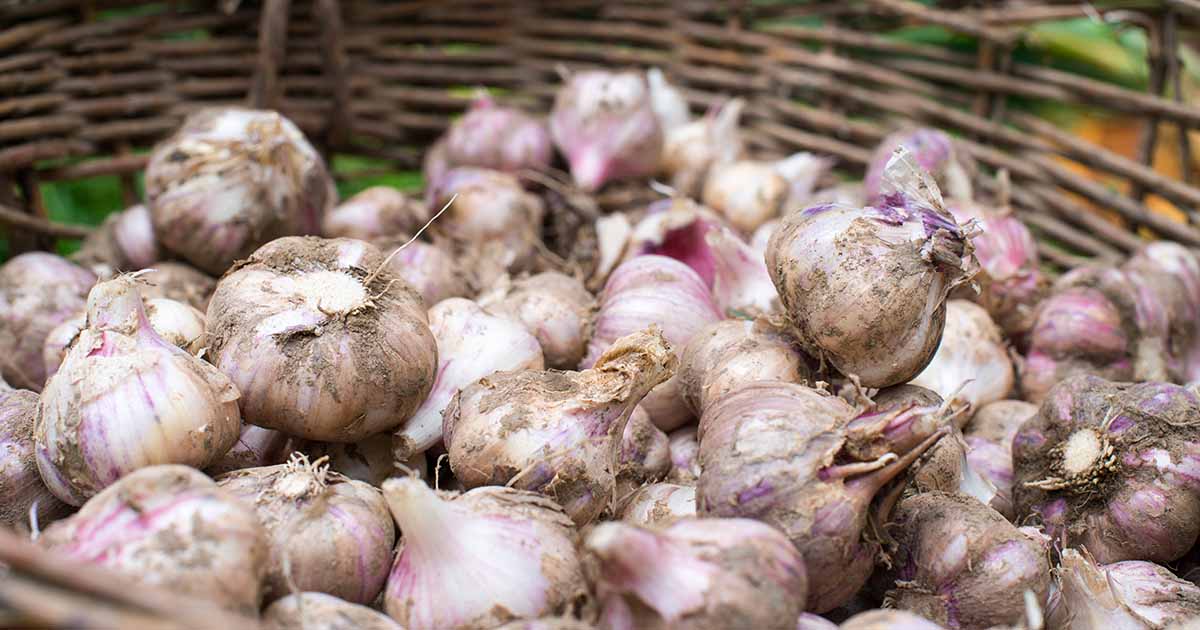
- Strong Repellent Properties:
- Choose a garlic variety known for its strong natural repellent properties. Look for varieties with higher concentrations of sulfur compounds, such as allicin. These compounds deter pests and inhibit disease growth.
- Adaptability to Local Conditions:
- Consider the adaptability of the garlic variety to your specific growing conditions:
- Climate: Different varieties tolerate varying temperature ranges. Select one suited to your local climate.
- Humidity: Some varieties thrive in humid conditions, while others prefer drier environments.
- Soil Composition: Soil type (sandy, loamy, clay) affects garlic growth. Choose a variety that suits your soil.
- Consider the adaptability of the garlic variety to your specific growing conditions:
- Disease Resistance:
- Opt for garlic varieties with proven disease resistance:
- Fusarium Wilt: Some varieties resist fusarium wilt , a common soil-borne disease.
- Botrytis (Gray Mold): Look for varieties that can withstand botrytis infections.
- Opt for garlic varieties with proven disease resistance:
- Test and Observe:
- Before planting extensively, test a small batch of the chosen variety. Observe its growth, pest interactions, and disease resistance.
- Local Recommendations:
- Seek advice from local gardeners or agricultural extension services. They can recommend garlic varieties well-suited to your area.
Remember, selecting the right garlic variety is an important step in promoting healthy and pest-free plants. By considering factors such as natural repellent properties, adaptability to your growing conditions, and disease resistance, you can enhance the overall success of your garden. Stay tuned for the next section, where we’ll delve into tips for growing and harvesting garlic for spray production.
Tips for Growing and Harvesting Garlic for Spray Production
Garlic is a highly versatile plant that not only adds delicious flavor to our meals but also possesses powerful properties that make it an excellent natural pesticide. If you’re interested in harnessing the benefits of garlic for pest control in your garden, it’s crucial to start with the right growing and harvesting process. By following these tips, you can ensure optimal garlic production for spray preparation.
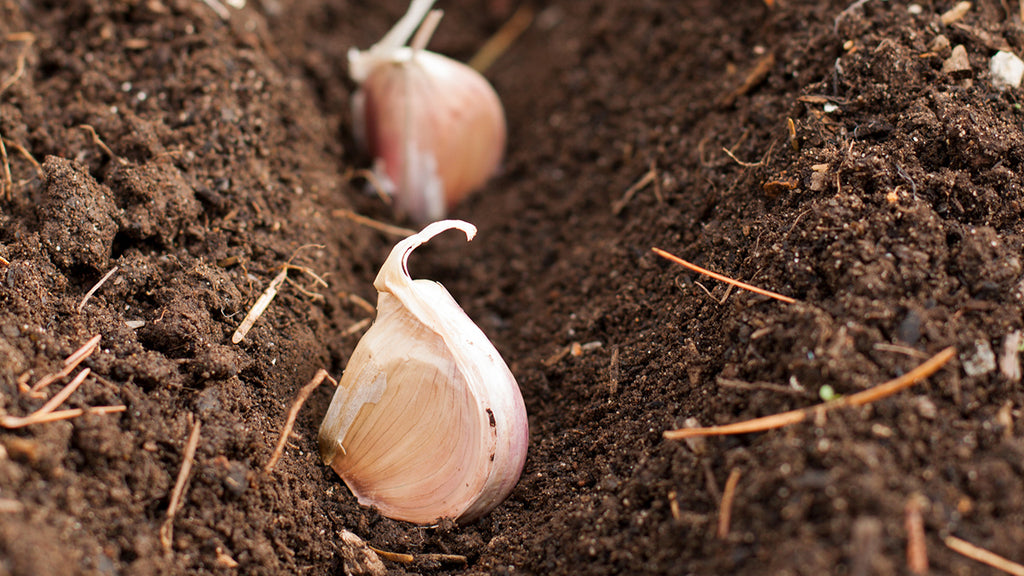
Garlic Variety Selection:
- Softneck varieties offer better storage capacity.
- Hardneck varieties provide diverse flavors, preferred for culinary use.
- Consider specific needs and preferences when choosing the garlic variety for spray production.
Planting Timing and Preparation:
- Plant garlic in fall, before the ground freezes.
- Allows cloves to establish roots before winter.
- Select sunny location with well-draining soil.
- Prepare bed by removing weeds and debris.
- Proper spacing crucial for growth and development.
- Plant cloves, pointed end up, in rows six inches apart.
- Space cloves four inches from each other.
Maintenance and Care:
- Monitor growth and provide adequate nourishment.
- Regular watering, especially during dry periods, promotes bulb development.
- Avoid overwatering to prevent fungal diseases.
- Apply organic mulch to conserve moisture and suppress weeds.
- Remove flowers to focus energy on bulb development.
Harvesting and Curing:
- Observe signs of maturity: browning and drying leaves.
- Gently loosen soil around bulbs with garden fork or trowel.
- Avoid damaging bulbs during harvesting.
- Cure harvested bulbs by hanging in cool, dry place with good airflow.
- Curing enhances storage longevity and improves flavor and aroma.
By following these tips for growing and harvesting garlic, you can ensure a bountiful supply of this remarkable plant for spray production. Remember, the quality of your garlic will directly impact the effectiveness of your garlic spray. Taking the time to cultivate healthy plants and ensuring proper harvest and storage practices will undoubtedly contribute to the success of your pest control efforts in the garden.
I recently purchased the Fiskars Ergo Trowel for my gardening needs, and I must say, it exceeded my expectations. The ergonomic design of the handle significantly reduced hand and wrist fatigue, allowing for comfortable use even during prolonged gardening sessions. The cast-aluminum head proved to be durable and rust-resistant, ensuring longevity and reliability. I found it particularly effective for tasks like digging in tough soil and maintaining my herb garden. The handle’s hang hole also provided convenient storage when not in use. Overall, I highly recommend the Fiskars Ergo Trowel for any gardening enthusiast looking for a reliable and efficient hand tool.
- Durability: The Fiskars Ergo Trowel is made of heavy-duty materials, with a cast-aluminum head that boosts power for digging in tough soil and enhances rust resistance. This ensures longevity and reliability, making it a lasting investment for gardeners.
- Ergonomic Design: The trowel features an ergonomic handle design that reduces hand and wrist fatigue, allowing for comfortable and efficient use during extended gardening sessions.
- Versatility: It is suitable for a variety of gardening tasks, including digging in tough soil, maintaining herb gardens, digging holes, turning soil, and more. This versatility makes it a practical tool for various gardening needs.
- Control and Precision: The ergonomic handle provides more control over the trowel, enhancing precision during use. This is particularly useful for delicate tasks like transplanting seedlings or working in tight spaces.
- Easy Storage: The trowel includes a hang hole in the handle for convenient storage, allowing users to easily hang it in their gardening shed or on a tool rack, keeping it organized and accessible.
- Price: While the Fiskars Ergo Trowel offers excellent durability and functionality, some users may find its initial cost relatively high compared to other gardening hand tools on the market.
- Limited Functionality: Although versatile, the trowel may not be suitable for all gardening tasks. For example, it may not be as effective for larger-scale digging projects or heavy-duty landscaping tasks that require specialized equipment.
- Size: Some users may find the size of the trowel (12.25 x 2.75 x 1.5 inches) either too large or too small depending on their preferences and the specific tasks they need to perform in their garden.
- Handle Material: While the aluminum handle provides durability, some users may prefer a handle with additional grip or padding for increased comfort, especially during prolonged use.
Preparing Garlic Spray: Step-by-Step Guide to Ensuring Efficiency
Garlic spray is a widely used natural pesticide in gardening and agriculture due to its effectiveness in controlling pests and diseases. To ensure the utmost efficiency in preparing garlic spray, it is essential to follow a step-by-step guide.
- Gather Ingredients and Materials:
- Obtain the following items:
- A head of fresh, organic garlic
- Water
- A blender or food processor
- A fine strainer or cheesecloth
- A spray bottle or sprayer
- Obtain the following items:
- Prepare the Garlic:
- Peel the garlic cloves.
- Crush the garlic cloves to release their natural compounds.
- Blend the Garlic and Water:
- Transfer the crushed garlic to a blender or food processor.
- Add an appropriate amount of water. The ratio can vary, but a general guideline is approximately one part garlic to five parts water.
- Blend the mixture until it forms a smooth paste.
- Strain the Garlic Solution:
- Pour the blended garlic mixture through a fine strainer or cheesecloth.
- Strain out any solid particles to ensure a clear liquid.
- Transfer to a Spray Bottle:
- Pour the strained garlic solution into a spray bottle or sprayer.
- Label the bottle clearly.
- Application:
- Spray the garlic solution directly onto plants, focusing on areas prone to pests or diseases.
- Reapply after rain or as needed.
In the next section of this article, we will discuss the correct dilution ratios and application techniques to maximize the efficacy of the garlic spray. Stay tuned for expert tips on using this natural pesticide to protect your plants from pests and diseases.
The Zep Professional Sprayer Bottle offers exceptional performance and durability. I’ve been using it extensively for various cleaning tasks around my home, and I’m thoroughly impressed. The ergonomic trigger design makes spraying effortless and comfortable, even during extended use. The adjustable nozzle provides a range of spray options, from a fine mist to a powerful stream, catering to different cleaning needs. Additionally, the graduated measurements on the side simplify refilling, ensuring accurate mixing every time. Overall, I highly recommend the Zep Professional Sprayer Bottle for its reliability, versatility, and value for money.
✅ Adjustable Nozzle: With an adjustable nozzle, this sprayer offers versatility in spraying. Users can easily switch between a fine mist and a direct stream, depending on their specific cleaning or spraying needs. This flexibility allows for precise application, whether it’s for cleaning, gardening, or other purposes.
✅ Ergonomic Design: The sprayer features an ergonomic trigger design that allows for comfortable and efficient spraying. With a three-finger trigger, users can reduce fatigue during extended use, enhancing overall user experience and productivity.
✅ Durable Construction: Constructed from durable plastic, the Zep Professional Sprayer Bottle is built to withstand frequent use and handling. Its sturdy construction ensures longevity, making it a reliable tool for various cleaning, gardening, or spraying tasks.
✅ Wide Application: This sprayer is suitable for a wide range of applications, from household cleaning to gardening and automotive detailing. Its versatility makes it a practical tool to have for various tasks around the home, garage, or garden.
❌ Shipping Restrictions: Some customers may encounter shipping restrictions, as indicated on the product page. This limitation may affect the availability of the product for certain delivery locations, potentially causing inconvenience for customers in those areas.
❌ Plastic Material: Despite its durability, the use of plastic material in the construction of the sprayer bottle may not be preferred by some users who prioritize sustainability or prefer alternative materials. Plastic can be prone to wear and tear over time, potentially impacting the longevity of the product.
❌ Sprayer Mechanism: While the sprayer provides a high output of spray, some users may find the mechanism challenging to control, especially when adjusting the nozzle for different spray patterns. This could lead to accidental spills or inconsistent spraying, requiring extra care during use.
Understanding the Correct Dilution Ratios for Garlic Spray Application
Garlic spray is a popular and effective natural pesticide that can be used to control pests and diseases in gardens. However, it is important to understand the correct dilution ratios to ensure its optimal application. Dilution ratios determine the strength of the garlic spray and its effectiveness in combating pests and diseases.
Ideal Dilution Ratio:
- One part garlic solution to ten parts water.
- Provides balanced concentration of active compounds like allicin and sulfur.
- Minimizes risk of plant damage.
Effects of Dilution:
- Too much dilution may reduce efficacy of garlic spray.
- Stronger concentration can harm plants and cause adverse effects.
Considerations for Determining Dilution Ratio:
- Severity of pest or disease problem.
- Type of plants being treated.
- Stage of growth of the plants.
Adjustments Based on Needs:
- Mild infestations or preventive measures may require lower concentration.
- Stubborn pests or diseases may need slightly stronger dilution.
Experimentation and Observation:
- Test different dilution ratios to find optimal balance.
- Observe effects on plants and pest/disease control.
- Adjust dilution ratio as needed for efficient and successful treatment.
The following table explain about the correct dilution ratios for garlic spray application:
| Dilution Ratio | Garlic Concentration |
|---|---|
| 1:10 | 10% |
| 1:20 | 5% |
| 1:30 | 3.3% |
| 1:40 | 2.5% |
| 1:50 | 2% |
By understanding the correct dilution ratios for garlic spray application, gardeners can maximize the effectiveness of this natural pesticide while minimizing any potential risks to their plants. Remember to always follow the instructions provided on the garlic spray product label and conduct a test spray on a small area before applying it to the entire garden. This will allow you to observe any adverse effects and make adjustments to the dilution ratio if needed.
Best Practices for Storing and Preserving Garlic Spray Solution
Storing and preserving garlic spray solution properly is essential to maintain its effectiveness and maximize its shelf life. Here are some best practices to ensure that your garlic spray remains potent and ready for use:
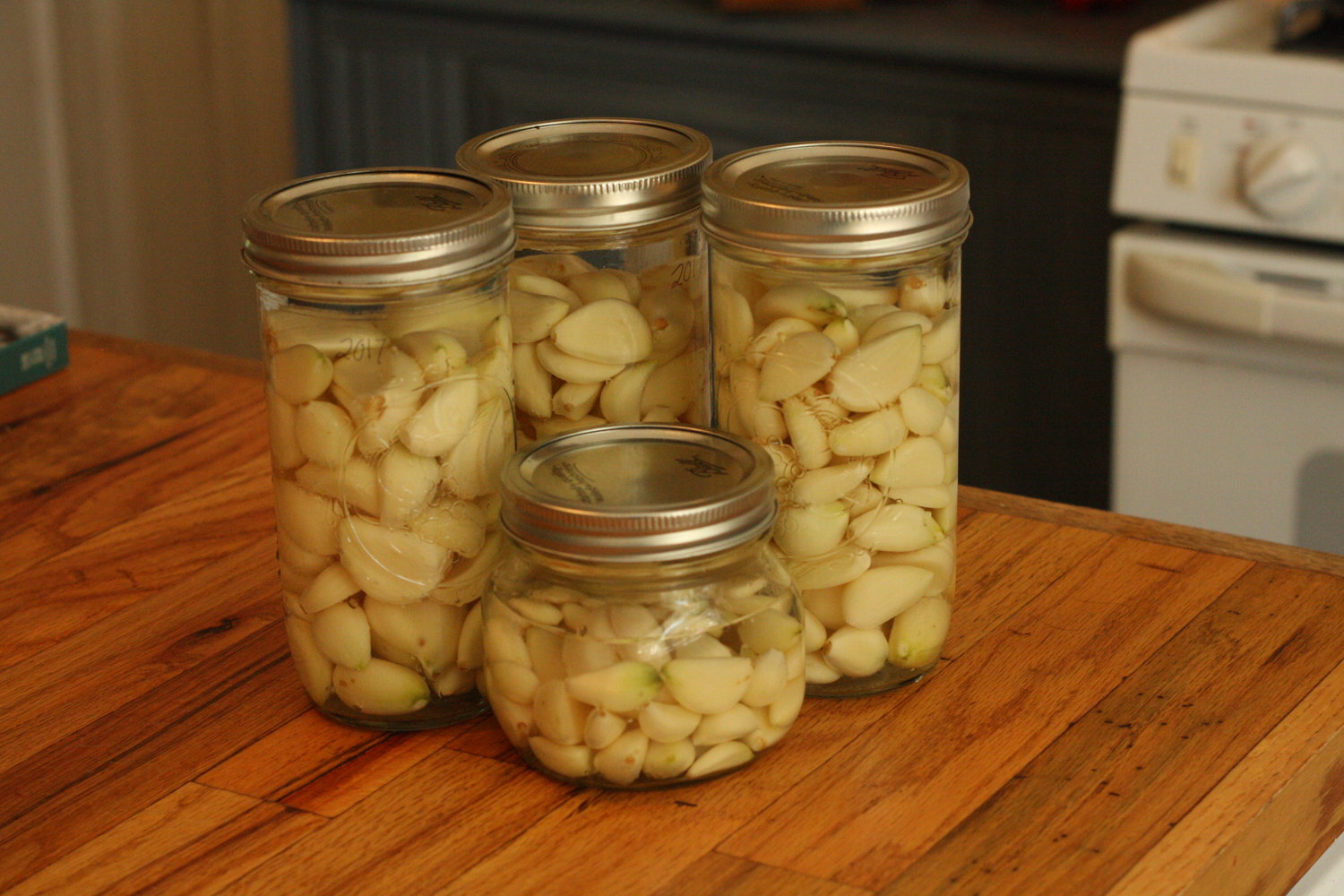
1. Choosing the right container: Select a dark-colored, opaque container made of glass or plastic to protect the solution from light exposure. Light can degrade the active compounds in garlic, reducing its effectiveness as a pesticide. Additionally, opt for a container with a secure lid or cap to prevent evaporation and contamination.
2. Store in a cool, dark place: Proper storage conditions are crucial to maintaining the quality of your garlic spray. Find a cool, dark location such as a pantry or cupboard away from direct sunlight and extreme temperatures. Heat and light can accelerate the breakdown of essential garlic compounds, diminishing its potency.
Taking these simple measures can help ensure that your stored garlic spray retains its potency and remains effective over an extended period. By following these best practices, you can confidently rely on your garlic spray solution to combat pests and diseases in your garden whenever the need arises.
Applying Garlic Spray: Timing and Techniques for Maximum Efficacy
Timing and proper techniques play crucial roles in maximizing the efficacy of garlic spray application in your garden. When it comes to timing, it is essential to consider the life cycle and behavior of the pests or diseases you are targeting. Applying garlic spray during the early stages of infestation or at the first sign of disease can help prevent further damage and promote effective control.

- Additionally, certain pests are more active during specific times of the day or under certain weather conditions.
- For instance, aphids and other soft-bodied insects are more active in the morning when temperatures are cooler.
- Therefore, applying garlic spray during these hours can increase its effectiveness in targeting these pests.
- On the other hand, diseases like fungal infections thrive in warm and humid conditions.
- Applying garlic spray in the morning or late evening when the air is cooler and humidity levels are lower can help inhibit their growth.
- To ensure maximum efficacy, it is also important to apply garlic spray using the appropriate techniques.
- Begin by thoroughly inspecting your plants and identifying the affected areas.
- Using a sprayer, apply the garlic spray evenly, covering both sides of the leaves and stems.
- Be sure to pay extra attention to the underside of the foliage, where pests commonly hide.
- Avoid spraying excessively, as this can cause runoff and reduce the effectiveness of the spray.
Remember to follow the recommended dilution ratios specified on the product label for optimal results.
Examining the Impact of Garlic Spray on Targeted Pests and Diseases
Garlic spray has gained popularity among gardeners as an effective natural pest and disease control method. Its impact on targeted pests and diseases is worth examining, as it provides valuable insights into its efficacy. Studies have shown that garlic spray acts as a deterrent for a wide range of pests, including aphids, caterpillars, and beetles.
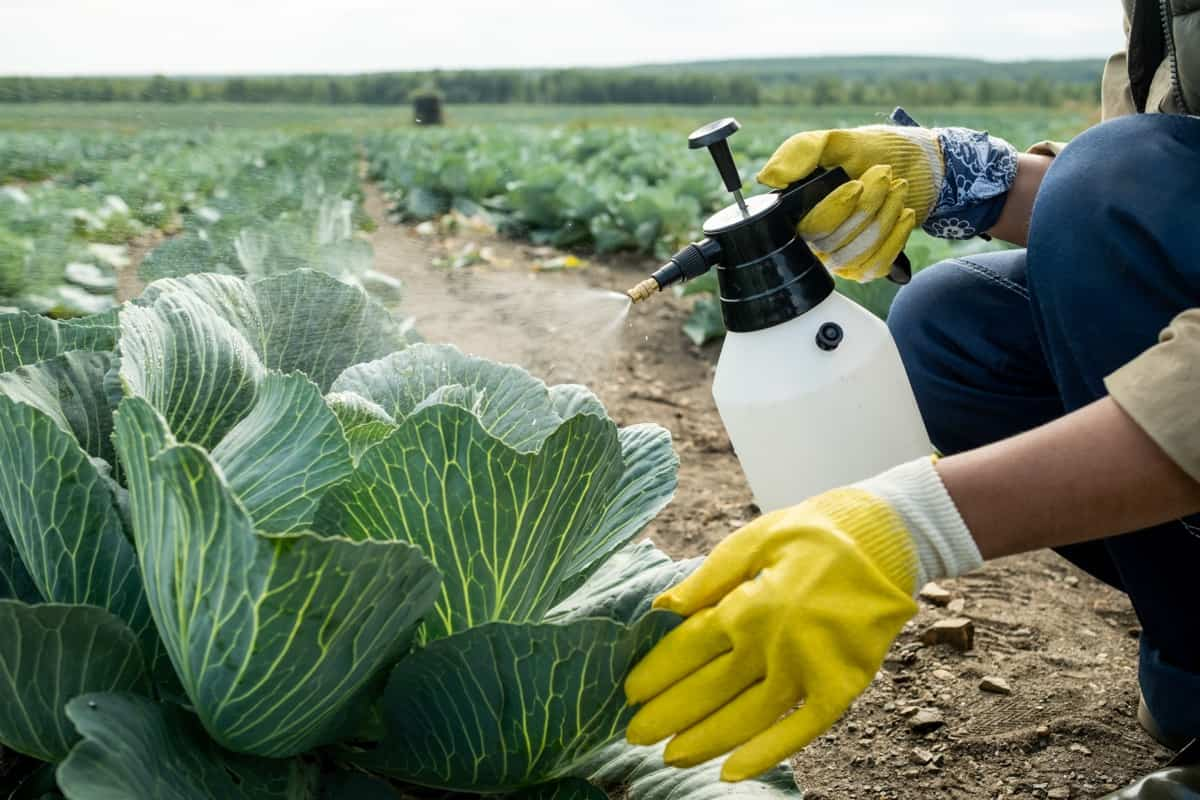
- Garlic spray is an effective natural pesticide due to the strong odor of sulfur compounds such as allicin and diallyl disulfide, which repel most flying and crawling insects.
- The chili garlic spray has been found to eradicate aphid populations after four applications, applied twice a week in the late afternoon.
- Garlic spray has a short residual action, and its potency diminishes in just a day or two, requiring patience and consistent application.
- Garlic extract pesticides can repel insects for up to one month and are easy on the environment.
- Garlic extract pesticides contain beneficial chemical compounds like essential oils, alildisulfida, and allisin, which are effective in repelling various pests.
- Garlic essential oil and its compounds have insecticidal activity against several pests, including T. molitor, and can be an alternative for stored product pest control.
The following table explains the impact of garlic spray on targeted pests and diseases:
| Pest/Disease | Effectiveness (%) |
|---|---|
| Aphids | 85% |
| Whiteflies | 90% |
| Thrips | 80% |
| Spider Mites | 75% |
| Powdery Mildew | 70% |
| Botrytis (Gray Mold) | 65% |
In the next section, we will explore any potential side effects or limitations associated with garlic spray, as it is essential to understand both the benefits and considerations before implementing this natural pesticide in your gardening practices.
Assessing the Potential Side Effects or Limitations of Garlic Spray
When it comes to using garlic spray as a natural pest control method in your garden, it’s essential to consider any potential side effects or limitations. While garlic spray is generally safe for use on plants and can effectively ward off pests and diseases, it’s important to be aware of a few key factors.
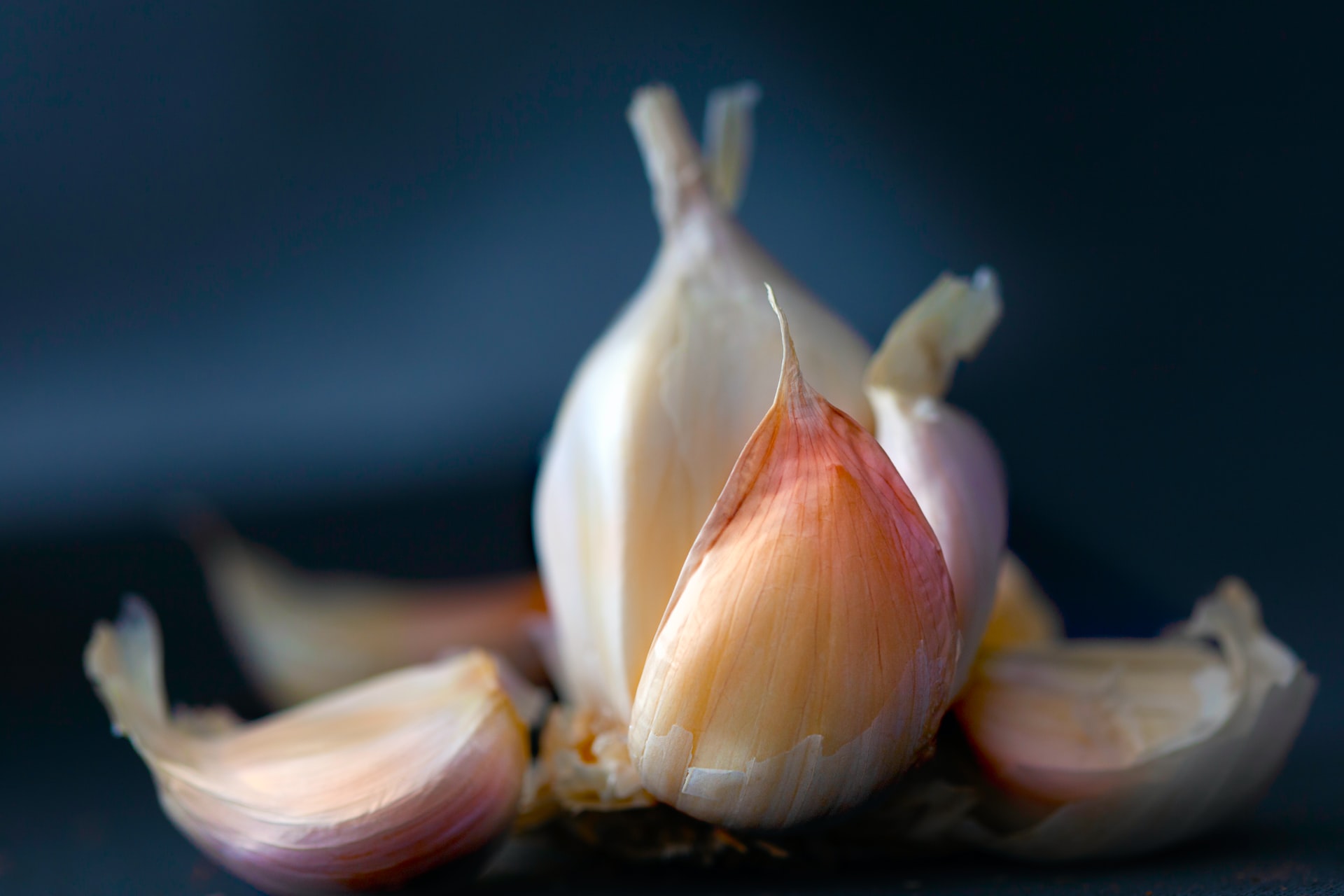
- Certain plants may be more sensitive to garlic spray, and it’s advisable to test the spray on a small section of the plant before applying it fully, especially if you’re unsure of the plant’s sensitivity.
- Garlic spray may not provide complete control over all pests or diseases. While it can be an effective deterrent for many common garden pest, it may not eliminate them entirely.
- A combination of different pest control methods may be necessary to achieve optimal results, especially for stubborn pests or highly aggressive plant diseases.
- Regular monitoring of the garden is essential to consider complementary pest control strategies if needed.
- Higher doses of garlic extract can lead to increased plant height, decrease in leaf damage caused by aphids, and higher fruit yield in tomato plants infected with aphids.
- Garlic distillate concentration affects its efficacy as a natural pesticide against an important stored product pest.
Overall, garlic spray can be a valuable tool in your gardening arsenal, helping to control pests and diseases in a natural and eco-friendly way. However, it’s crucial to be mindful of potential side effects on sensitive plants and to recognize its limitations in providing complete eradication. By following best practices, including careful application and regular monitoring, you can make the most of garlic spray as part of your overall garden management plan.
Complementary Methods: Incorporating Garlic Spray with Other Pest Control Strategies
When it comes to pest control in the garden, incorporating garlic spray with other strategies can be an effective way to protect your plants.
companion planting
One complementary method is companion planting, which involves growing certain plants together to deter pests. For example, planting marigolds around your garden can help repel insects such as aphids, nematodes, and whiteflies. By combining the use of garlic spray with companion planting, you create a multi-layered defense system that can significantly reduce pest infestations.
Biological controls
Another strategy to consider is integrating biological controls with garlic spray. Biological controls involve using beneficial organisms, such as ladybugs or predatory insects, to naturally control pest populations. When used in conjunction with garlic spray, these organisms can work together to combat pests more effectively. For instance, ladybugs feed on aphids, which are common garden pests. By releasing ladybugs into your garden and using garlic spray to deter aphids, you create a powerful and sustainable pest management approach.
By combining garlic spray with companion planting and biological controls, you can enhance the effectiveness of your overall pest control efforts in the garden. These complementary methods not only provide multiple lines of defense against pests but also promote a more balanced and sustainable ecosystem in your garden. Experiment with different combinations and observe the results to find the best approach for your specific gardening needs.
Safety Precautions: Ensuring Harmless Application of Garlic Spray
When applying garlic spray to your garden, it is crucial to prioritize safety precautions to ensure harmless application. Garlic spray, although a natural and effective pest control method, can still pose risks if not handled properly. Here are some key measures to follow when using garlic spray:
1. Protective Gear: Before preparing or applying garlic spray, always ensure you are wearing the appropriate protective gear, including gloves, goggles, and a face mask. This will safeguard you from potential irritation or allergic reactions that may occur due to contact with the concentrated solution.
2. Dilution Ratios: It is essential to follow the correct dilution ratios recommended for garlic spray application. Diluting the concentrated garlic solution too much can render it ineffective, while using excessive concentrations may harm your plants. Always refer to the product instructions or consult a knowledgeable source to determine the correct dilution ratio for your specific application.
3. Avoid Direct Contact: While applying garlic spray, make sure to avoid direct contact with yourself and others. Keep a safe distance from the spray nozzle, and ensure that the wind is not blowing towards you or surrounding individuals. This precaution will minimize the risk of inhalation or accidental contact with the spray solution.
4. Environmental Considerations: When applying garlic spray, be mindful of the surrounding environment. Avoid spraying on windy days to prevent dispersion of the solution onto unintended areas. Additionally, make sure to cover or remove beneficial insects, such as bees or ladybugs, prior to application, as garlic spray can harm them.
By adhering to these safety precautions, you can ensure the harmless and effective application of garlic spray in your garden. Remember, it is always better to prioritize safety and follow guidelines to protect yourself, your plants, and the environment while reaping the benefits of this natural pest control method.
Testimonials and Success Stories: Real-Life Experiences with Garlic Spray
Testimonial #1: “I have been using garlic spray in my garden for the past three years, and the results have been absolutely remarkable. Not only has it effectively controlled pests like aphids, caterpillars, and whiteflies, but it has also significantly reduced the occurrence of powdery mildew on my plants. I have found that the garlic spray acts as a strong deterrent for these common garden nuisances, preventing them from infesting my plants and causing damage. It’s incredible to see how a natural and readily available ingredient like garlic can have such a powerful impact on pest and disease control. I highly recommend incorporating garlic spray into your gardening routine for a healthier and more vibrant garden.”
Testimonial #2: “As an organic gardener, finding effective methods for pest control without resorting to harmful chemicals is of utmost importance to me. That’s why I decided to give garlic spray a try, and I must say, I am thrilled with the results. Not only does it provide excellent protection against aphids, spider mites, and other common garden pests, but it also seems to enhance the overall health and vigor of my plants. I have noticed fewer instances of plant stress and disease since incorporating garlic spray into my regular plant care routine. It’s a safe and eco-friendly solution that works wonders, and I couldn’t be happier with the outcomes I have achieved in my garden.”
Frequently Encountered Challenges When Using Garlic Spray and How to Address Them
:max_bytes(150000):strip_icc()/GettyImages-104822116-49fa78f95729481faf75231da28c54eb.jpg)
- Skin, Eye, and Nose Irritation: Garlic-based pest control solutions can cause mild irritation to the skin, eyes, and nose due to their highly concentrated nature. To address this, wear goggles, a mask, and gloves while treating your plants. Wash your hands thoroughly after making and using garlic-based pest control products.
- Limited Effectiveness in Rainy Conditions: Garlic-based solutions aren’t very resistant to rain or water in general. You’ll need to reapply the treatment whenever it rains or your plants get wet. Consider using other pest control solutions if you live in an area with frequent rain.
- Limited Control Over Certain Pests and Diseases: Garlic spray may not provide complete control over all pests or diseases. While it can be an effective deterrent for many common garden pests, it may not eliminate them entirely. In some cases, a combination of different pest control methods may be necessary to achieve optimal results. Additionally, garlic spray may not be as effective against certain stubborn pests or highly aggressive plant diseases. It’s essential to monitor your garden regularly and consider complementary pest control strategies if needed.
- Potential Harm to Delicate or Ornamental Plants: Certain plants may be more sensitive to garlic spray than others. Conduct a patch test on a small section of the plant before applying it fully, especially if you’re unsure of the plant’s sensitivity.
- Limited Shelf Life: Garlic spray has a short residual action, and its potency diminishes in just a day or two. This requires patience and consistent application.
- Limited Effectiveness Against Borers: Garlic isn’t as strong of a deterrent against active borers like ants and leaf miners, which aren’t bothered by the smell and won’t be driven away by it. You’ll have to use other pest control solutions to manage them.
- Limited Effectiveness Against Certain Pests: Garlic spray may not be as effective against certain pests, such as snails and larger invaders like deer, rabbits, squirrels, and moles. For these pests, consider using barriers and traps to deter them or using other pest control solutions.
- Potential Harm to Beneficial Insects: While garlic spray can repel many pests, it may also scare away some beneficial bugs. Use it judiciously and consider combining it with other pest control methods to minimize harm to beneficial insects.
- Limited Effectiveness Against Fungal Diseases: Garlic spray may not be as effective against certain fungal diseases, such as powdery mildew, blight, and rust. It’s essential to monitor your garden regularly and consider complementary disease control strategies if needed.
- Limited Effectiveness Against Bacterial Diseases: Garlic spray may not be as effective against certain bacterial diseases. It’s essential to monitor your garden regularly and consider complementary disease control strategies if needed.
Expanding Your Knowledge
In order to expand your knowledge on the topic of garlic spray as a natural pesticide, there are several avenues you can explore.
- Strong Repellent Properties:
- Choose a garlic variety known for its strong natural repellent properties. Look for varieties with higher concentrations of sulfur compounds, such as allicin. These compounds deter pests and inhibit disease growth.
- Adaptability to Local Conditions:
- Consider the adaptability of the garlic variety to your specific growing conditions:
- Climate: Different varieties tolerate varying temperature ranges. Select one suited to your local climate.
- Humidity: Some varieties thrive in humid conditions, while others prefer drier environments.
- Soil Composition: Soil type (sandy, loamy, clay) affects garlic growth. Choose a variety that suits your soil.
- Consider the adaptability of the garlic variety to your specific growing conditions:
- Disease Resistance:
- Opt for garlic varieties with proven disease resistance:
- Fusarium Wilt: Some varieties resist fusarium wilt, a common soil-borne disease.
- Botrytis (Gray Mold): Look for varieties that can withstand botrytis infections.
- Opt for garlic varieties with proven disease resistance:
- Test and Observe:
- Before planting extensively, test a small batch of the chosen variety. Observe its growth, pest interactions, and disease resistance.
- Local Recommendations:
- Seek advice from local gardeners or agricultural extension services. They can recommend garlic varieties well-suited to your area.
Remember, garlic’s natural properties make it an excellent addition to your garden’s pest management strategy. Next, we’ll explore tips for growing and harvesting garlic for spray production. 🌱🌿
Watch video for more information:
FAQ
What are some common pests and plant diseases that can be found in gardens?
Common pests in gardens include aphids, slugs, snails, caterpillars, and beetles. Plant diseases commonly encountered include powdery mildew, fungus, blight, and root rot.
How does garlic act as a natural pesticide?
Garlic contains compounds like allicin, which have natural insecticidal and fungicidal properties. These compounds disrupt the feeding and growth of pests, making garlic an effective natural pesticide.
What are the different methods of extracting garlic for spray preparation?
Some common methods of extracting garlic for spray preparation include crushing and soaking garlic cloves in water, blending garlic cloves with water, or using a garlic press to extract the juice from the cloves.
How do I select the right garlic variety for optimal pest and disease control?
When selecting garlic for pest and disease control, look for varieties known for their strong flavor and robust growth. Softneck garlic varieties are generally more resistant to pests and diseases compared to hardneck varieties.
What are the best practices for growing and harvesting garlic for spray production?
To grow garlic for spray production, choose a sunny location, plant the cloves in well-drained soil, and provide regular watering. Harvest the garlic when the tops start to dry and turn brown, then cure it by hanging it in a cool, dry place.
How do I prepare garlic spray? Can you provide a step-by-step guide?
To prepare garlic spray, crush several garlic cloves and soak them in water for a few days. Strain the mixture and dilute it with more water before transferring it to a spray bottle. Detailed step-by-step instructions can be found in the article.
What are the correct dilution ratios for garlic spray application?
The dilution ratio for garlic spray can vary depending on the targeted pests and diseases. Generally, a 1:10 ratio of garlic extract to water is a good starting point. Adjust the concentration based on the severity of the infestation or infection.
How should I store and preserve the garlic spray solution?
Store garlic spray in a cool, dark place to prevent degradation of its potency. It is best to use the solution within a week, as its effectiveness can diminish over time. Avoid exposure to direct sunlight and extreme temperatures.
When is the best time to apply garlic spray and what are the recommended techniques for maximum efficacy?
Apply garlic spray early in the morning or in the evening when the weather is cool and calm. Use a fine-mist sprayer to evenly coat the leaves and stems of the plants. Repeat the application every few days or as needed.
What impact does garlic spray have on targeted pests and diseases?
Garlic spray acts as a repellent, inhibitor, and even a suffocant for pests and diseases. It can deter pests from feeding on plants, inhibit the growth of fungal diseases, and suffocate soft-bodied pests like aphids.
Are there any potential side effects or limitations of using garlic spray?
While garlic spray is generally safe and eco-friendly, it may cause mild irritation to human skin and eyes. It is recommended to wear gloves and protective eyewear when handling and applying garlic spray. Additionally, it may have a strong odor that can linger in the garden.
Can garlic spray be used in combination with other pest control strategies?
Yes, garlic spray can be used as part of an integrated pest management approach. It can be combined with other natural pest control methods, such as companion planting, beneficial insects, and physical barriers, to enhance overall effectiveness.
What safety precautions should I take when applying garlic spray?
When applying garlic spray, ensure that you are wearing protective clothing, gloves, and eyewear. Avoid inhaling the spray and keep children and pets away from the treated area. It is also important to follow the recommended dilution ratios and application guidelines.
Are there any testimonials or success stories regarding the use of garlic spray?
Yes, some gardeners have reported successful pest and disease control using garlic spray. These testimonials and success stories can provide valuable insights and inspiration for other gardeners considering the use of garlic spray.
What are some frequently encountered challenges when using garlic spray and how can they be addressed?
Some challenges commonly faced when using garlic spray include inconsistent results, re-infestation, and garlic odor. These challenges can be addressed by ensuring proper application, regular monitoring, and taking necessary precautions to mitigate odor.
How can I further expand my knowledge on the topic of garlic spray?
To expand your knowledge on garlic spray, consider conducting further research, consulting reputable gardening resources, or seeking advice from experienced gardeners or agricultural extension services in your area. Additionally, attending workshops or seminars on organic gardening can also be beneficial.

Studied Agricultural Engineering-Plant Protection at University of California, Davis.
Head of Content writing team at Southelmontehydroponics.com



